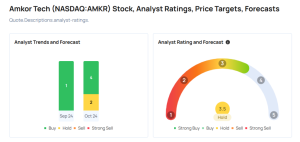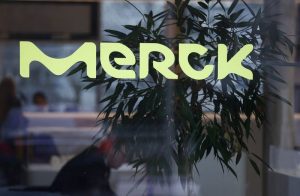Concerns over lackluster guidance and plans for record capital investment weighed on the Magnificent Seven trade this past week.
The Roundhill Magnificent Seven ETF (MAGS) fell 2.4% over the last five trading days, led by Alphabet’s (GOOG, GOOGL) 9.2% drop and Amazon’s (AMZN) 3.6% decline.
And it’s just the latest headwind for the group. The tech sector is still recovering from the DeepSeek-driven sell-off last month, after investors panicked over fears of a cheaper open-source large language model.
Opening Bid Podcast: how to trade the DeepSeek bombshell
But the development of DeepSeek should be viewed as a catalyst for the industry, not a headwind, according to top CEOs and industry experts. One former OpenAI employee told me the market should see DeepSeek developments as a “win,” given their potential to accelerate AI innovation and adoption.
“DeepSeek’s R1 model is a breakthrough … Being excited about progress in science is something that we should all want, and seeing the cost of a critical resource come down is also something we should want,” explained Zack Kass, OpenAI’s former head of Go-To-Market.
And that sentiment has been echoed by Big Tech CEOs. Alphabet CEO Sundar Pichai described the company’s work as “tremendous” on his firm’s earnings call earlier this week, while Meta (META) CEO Mark Zuckerberg said there were a “number of novel things” that DeepSeek did that the company is “still digesting.”
For investors looking to cash in on AI’s next growth phase, it may be time to look beyond hyperscalers and chipmakers like Nvidia (NVDA) and AMD (AMD).
The play: AI network stocks — the group that provides the infrastructure for AI applications.
And here’s why: As AI models like DeepSeek’s R1 significantly increase compute demand, the need for high-speed networking solutions will only grow. Bank of America’s Chun Him Cheung wrote in a note to clients this week that a cheaper cost for compute should lead to “wider AI-adoption” and demand should be “robust.”
T. Rowe Price Science and Technology equity strategy portfolio manager Tony Wang told me he sees the group as “well positioned,” while Stifel’s Ruben Roy also sees upside, citing DeepSeek’s R1 model as a driver of global demand for robust and high-speed networking infrastructure.
“The networking aspect of it is definitely where there’s a bottleneck in terms of delivering AI infrastructure,” Wang told me. “We’re going to need to see a lot more innovation at that layer. “
Roy sees Ciena (CIEN), Coherent (COHR), and Celestica (CLS) as top beneficiaries as “AI workloads get more efficient to run.”

